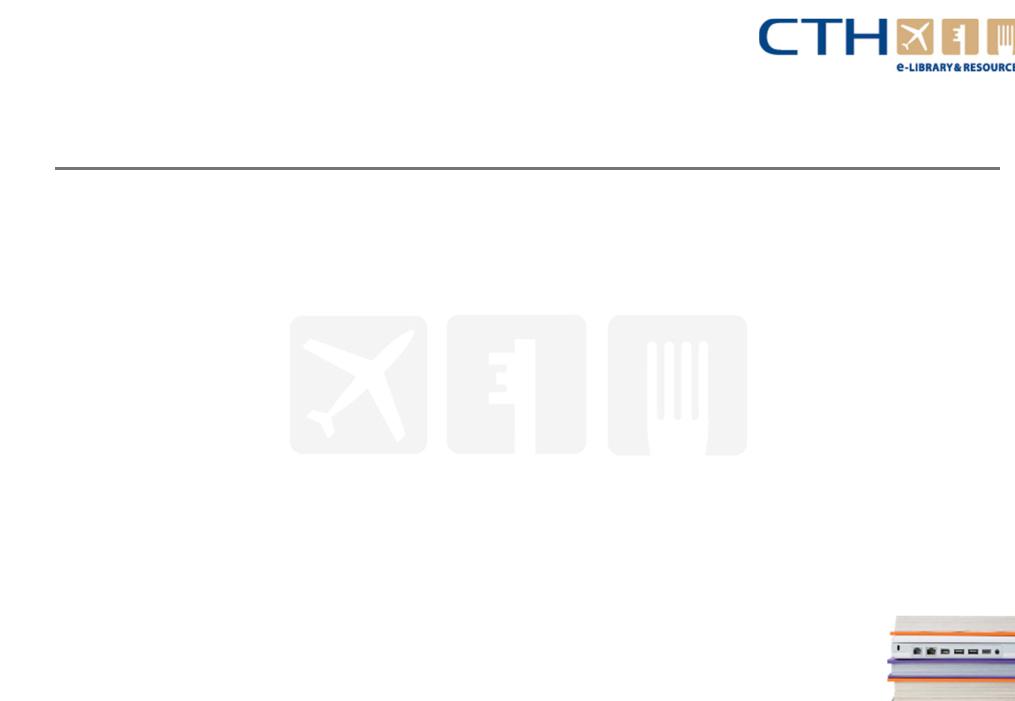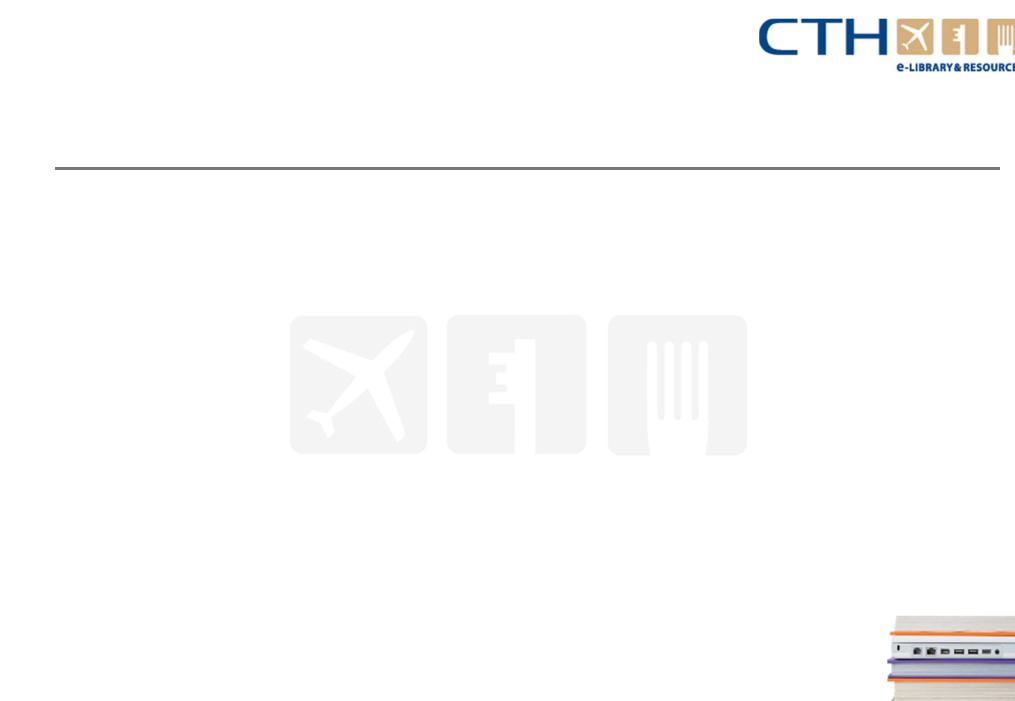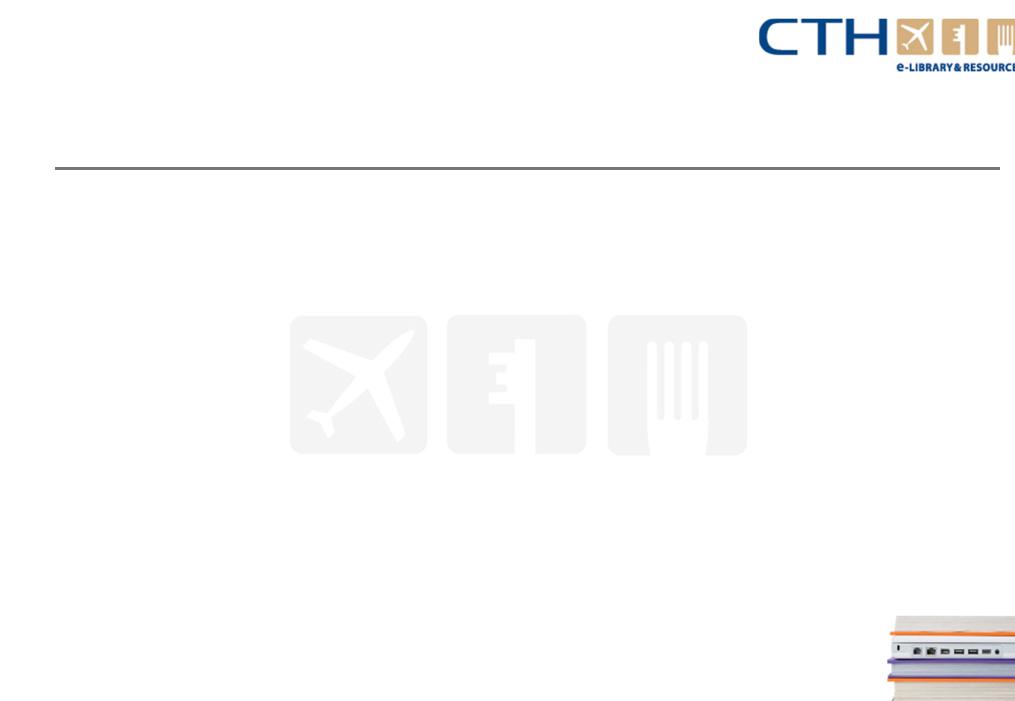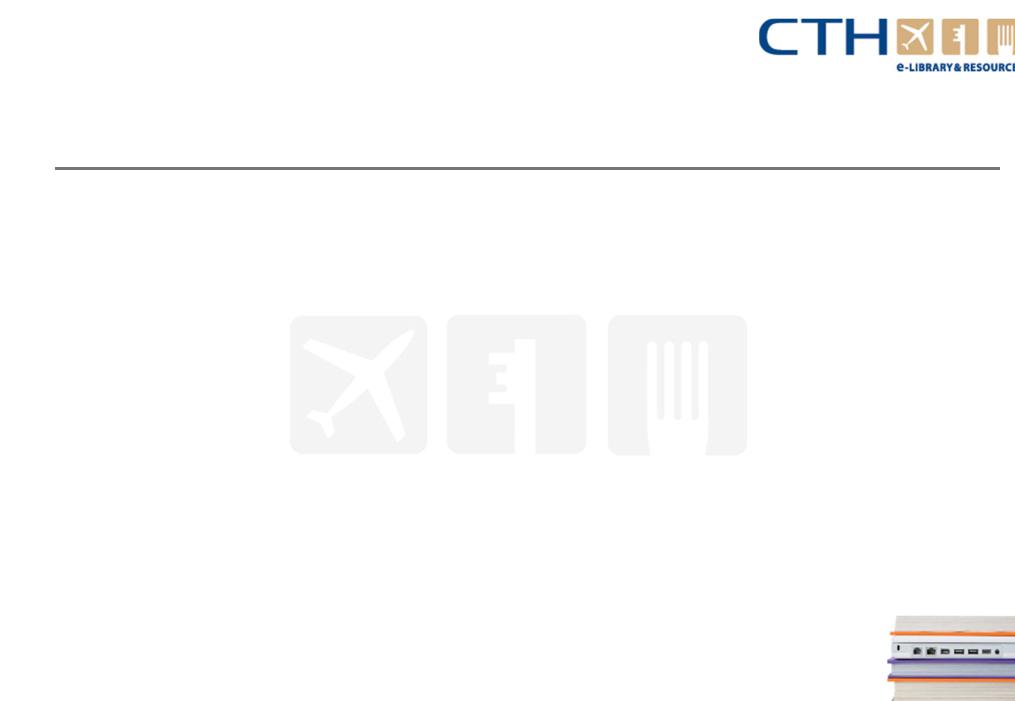
Front_Office_Operations
.pdf
Chapter 5– Guest accounting
Billing system
2.2 Machine billing systems continued…
●On check-in, the guests details are typed at the head of a bank folio card, and inserts the folio into the machine. The folio is opened by entering the room number and the opening balance (0 – or a negative number if a deposit or pre-payment has been made).
●When charges are posted, the relevant folio and vouchers are inserted into the machine. The billing machine stores the transaction amounts in its memory, prints each item on the guest folio and creates a new balance; prints the same item with the room number on an ‘audit roll’ (which can be checked against vouchers in the event of queries); and cancels the voucher by overprinting it.
●At the end of the day / shift, the machine print out a summary of the total balance carried forward (from its previous summary); total debits, total credits, and total balance carried forward. These figures can then ‘balanced’ as for a tabular ledger.
●And also it shows the totals of each different type of charge (for analysis). The machine's memory can then be ‘cleared ‘ for the following day's transactions.
●On check-out, the guests folio is inserted into the machine, and the operator enters the amount of
payment (or transfer to the ledger account). The machine prints the final guest folio.
www.cthresources.com |
Page 291 |
|
www.cthawards.com |

Chapter 5– Guest accounting
Billing system
2.2 Machine billing systems continued…
Advantages of billing machines |
Disadvantages of billing machines |
Calculations are handled automatically: greater |
|
accuracy, less staff time |
Still potential for error inputting of charges |
Vouchers are cancelled automatically: less risk of |
Print-out for guest bill (folio) may be confusing, with |
being charged twice in error |
codes, abbreviations etc. |
Guest bills (folios) are printed rather than |
Cost, and time required to train staff to use the |
handwritten: may look more professional |
system competently |
|
Machines are mainly obsolete: can be hard to obtain |
Easier checking and balancing |
replacement parts! |
www.cthresources.com |
Page 292 |
|
www.cthawards.com |

Chapter 5– Guest accounting
Billing system
2.3 Computer billing systems
●Charges can be posted in batches (as a multi-room post), with individual room accounts automatically updated for the charges that apply to them.
●Some transactions can be automatically entered by the system itself: pre-set room charges will be posted each day from the reservation records, e.g.. restaurant/bar bills may be directly input to the account from Electronic Point of Sale systems; telephone call charges may be automatically logged by the computer-linked phone system. Charges to be paid on credit (e.g.. for corporate account customers) are automatically posted to the City Ledger
●Each guest account will be automatically updated with running totals and outstanding balances, so that the cashier can always provide a current balance (or copy of the account-to-date) for the guest.
●Adjustments and corrections (e.g.. the reversal of wrongly posted charges, or transfer of the account if a guest changes rooms) can be done easily.
www.cthresources.com |
Page 293 |
|
www.cthawards.com |

Chapter 5– Guest accounting
Billing system
2.3 Computer billing systems continued…
●The system will carry out all calculations: e.g.. for the addition of VAT to relevant charges; the calculation of commission on commissionable bookings; and the calculation of foreign currency exchange and related commission charges.
●The system alerts the cashier if guests exceed their pre-set credit limit, and have to be asked for an interim settlement.
●The system automatically carries out the various 'audit' functions required to check and balance the various accounting records (as discussed later in the chapter).
●Final guest bills are calculated and generated by the system: far less time-consuming and error prone than manual systems, and more professionally presented in printed form, with all debit and credit charges clearly itemised.
●Invoices and statements can be generated for corporate account customers from the guest data already in the system.
www.cthresources.com |
Page 294 |
|
www.cthawards.com |

Chapter 5– Guest accounting
Billing system
2.3 Computer billing systems continued…
●Reports can automatically be generated to show payments which are outstanding (e.g.. charges posted after a guest has left; amounts owing by 'skip outs'; and late payments by credit customers) for the purposes of 'chasing'.
●Management reports can also be automatically generated to show total revenues by division or point of sale; average revenues per room etc
The main advantages of this - as for all other computerised applications - are speed, efficiency and accuracy, and the freeing up of valuable staff time to focus on guest service!
www.cthresources.com |
Page 295 |
|
www.cthawards.com |

Chapter 5– Guest accounting
Banking
3.Banking
3.1Banking procedures
3.2Bank reconciliation
www.cthresources.com |
Page 296 |
|
www.cthawards.com |

Chapter 5– Guest accounting
Banking
3.1 Banking procedures
At the end of each day (or more often if necessary to remove cash from the premises for security reasons), the 'takings' (money received) from the various operations of the hotel should be 'banked‘.
The front office sections, and other departments usually 'pay-in' their takings to the cashier's office at the end of a shift (receive payments for products and services)All payments are gathered together, and handed into the cashier with a summary, which is generally written out on an internal paying-in slip. This breaks down the totals of foreign currency and foreign currency traveller's cheques, plus sterling cash (broken down by denominations), sterling traveller's cheques, personal cheques, credit card vouchers. petty cash and/or VPO vouchers etc - allowing the cashier to make a quick count and check. The petty cash and VPO vouchers can then be processed, and the cash, cheques and credit card vouchers from all the departments consolidated for paying-in to the bank
www.cthresources.com |
Page 297 |
|
www.cthawards.com |

Chapter 5– Guest accounting
Banking
3.1 Banking procedures continued…
A paying-in book is used to record the amount to be banked in each transaction. You may be familiar with the system from the 'deposit' book you use to pay cash and cheques into your own personal bank account. The main difference is that the hotel's paying in book may have duplicate or triplicate sheets, so that the top copy of each paying-in slip is given to the bank together with the cash and cheques being paid-in, the duplicate remains in the book for the hotel's financial control purposes - and, if the hotel is part of a chain or group, a third copy can be sent to head office (as a report on the day's revenue).
One obviously important element of the paying-in of cash and cheques is to ensure that the paying-in book is correctly and accurately filled out. Cheques are listed individually, with the name of the drawer (payer), bank and amount. Separate pages are used for foreign currency (calculated at the bank's current exchange rate) and credit card payments.
Banks have sophisticated machinery for counting piles of notes and bags of coins, but some preparation is required;
● Piles of bank notes must all be facing the same way up, and should be packaged in bundles of £100or £500 wherever possible.
www.cthresources.com |
Page 298 |
|
www.cthawards.com |

Chapter 5– Guest accounting
Banking
3.1 Banking procedures continued…
Banks have sophisticated machinery for counting piles of notes and bags of coins, but some preparation is required;
●Coins should be bagged, in separate bags for each type of coin. The bags provided by banks detail how much of any coin should be included. (bags for 50 pence pieces may be for £10 worth / 20 coins.
Take the money to the bank during its opening hours. However, most hotels will still be receiving payments (e.g.. in the restaurant) long after the banks have closed, and on weekends. Their options are :
●To collect the total takings for the day and keep them in the cashier's safe overnight to be paid into the bank the following morning.
●To pay in some of the day's takings during the day, perhaps last thing before bank closing time. The remainder can then be kept in the safe overnight, to be paid into the bank the following morning (two trips to the bank each day).
●To collect the total takings for the day and deposit them into the bank's night safe facility.
www.cthresources.com |
Page 299 |
|
www.cthawards.com |

Chapter 5– Guest accounting
Banking
3.2 Bank reconciliation
Each month (or if appropriate), the hotel's bank should send it a bank statement, itemising the balance on the account at the beginning of the period, receipts into and payments from the account during the period, and the balance at the end of the period.
When the hotel gets its bank statement, the accountant should check to ensure that the bank's account of these transactions tallies with the hotel's own records (e.g.. the cash book).
There may be errors in calculation, or in recording income and payments - and these are just as likely to have been made by the hotel as by the bank.
There may be deductions made by the bank (e.g.. bank charges, interest on overdrafts, loans), which the hotel did not anticipate.
There may be timing differences, creating discrepancies in the figures. (e.g.. The hotel's records may included paid-in cheques or credit card vouchers, but these may not yet have been 'cleared' and the amounts added to the hotel's bank account).
www.cthresources.com |
Page 300 |
|
www.cthawards.com |
